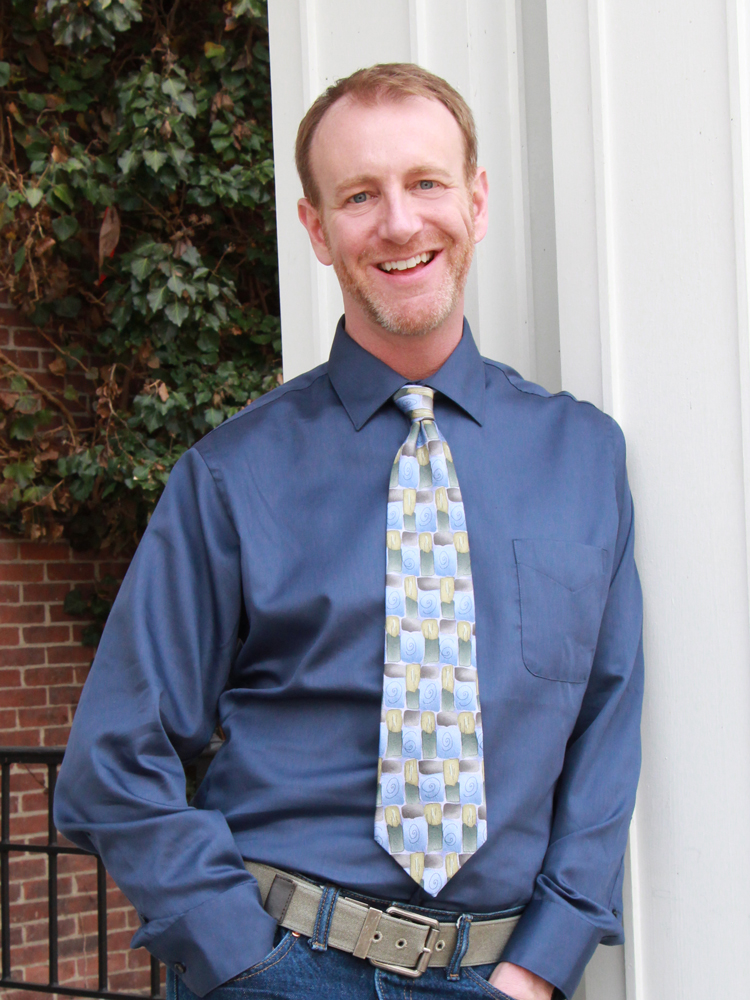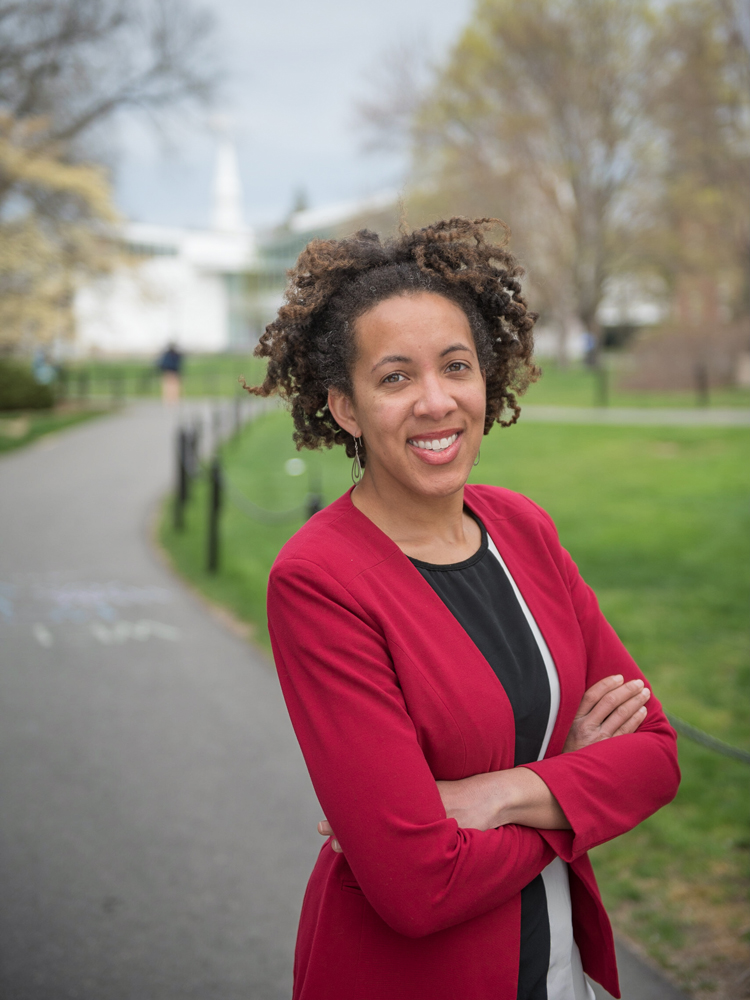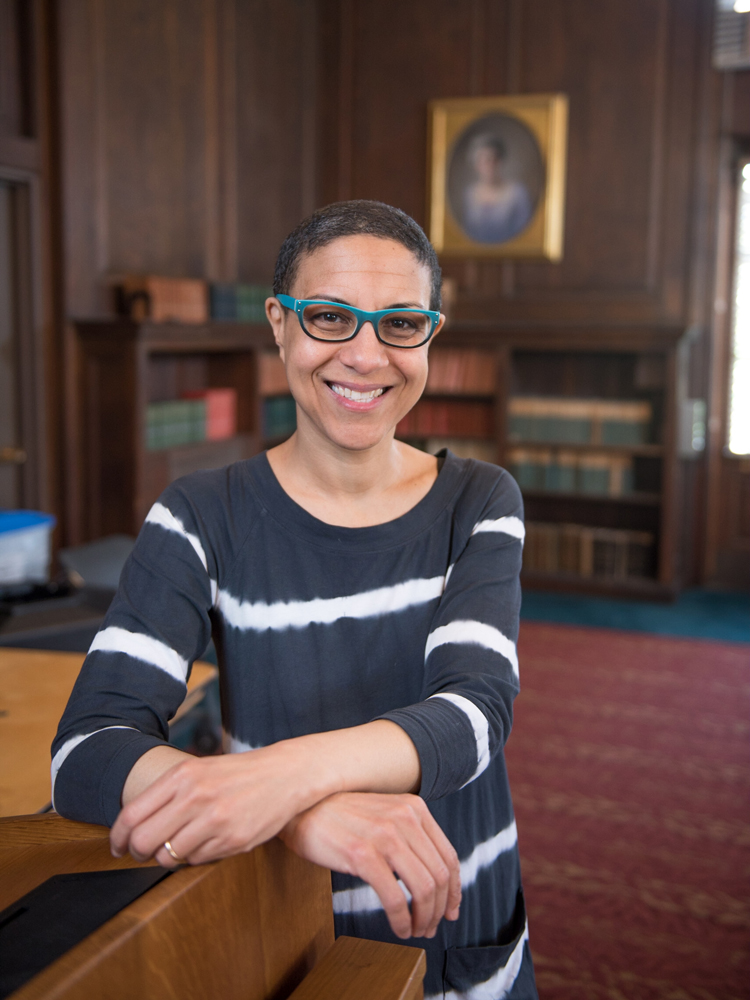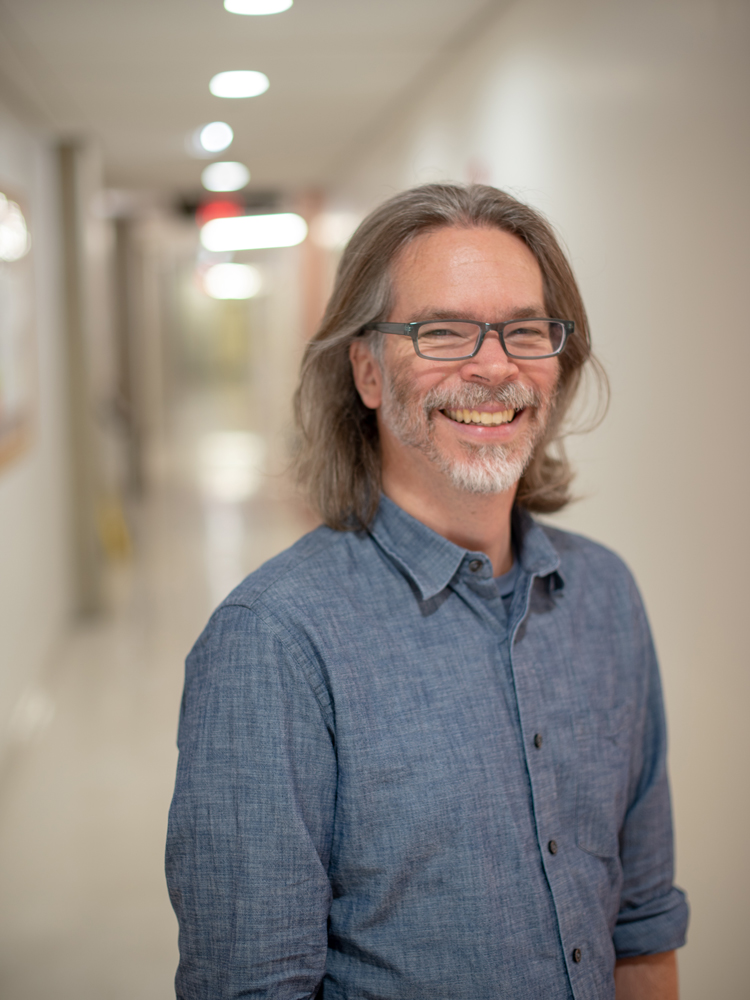Transforming Learning for a New Environment
Research & Inquiry

Published April 17, 2020
“Impossible!” That was dance professor Rodger Blum’s reaction when he first heard about Smith’s plan to offer courses via alternate modes of instruction after Spring Break. How could a discipline that relies so heavily on physical activity and kinetic knowledge be taught remotely, he wondered.
But Blum—who directs Smith’s M.F.A. in dance program—quickly realized that he and his colleagues were experiencing a dilemma facing dancers all over the world. “In London, Berlin, San Francisco, Hong Kong: There’s not one dancer in the world who can walk into a studio with another dancer,” he says. “We’re participating in the global effort to keep this art form going.”
So Blum cleared out space on the second floor of his home. Staff from Smith’s theatre and Information Technology departments brought over a camera, cables and microphone, as well as a dance floor and a ballet barre, and the Dance Department faculty member is now teaching three courses per week from his new virtual studio.
Blum and other Smith professors have risen to the challenge of teaching remotely for the second half of the spring semester while the majority of students are off campus due to the coronavirus pandemic.
Smith was one of the first to make the move, in order to protect the health of the college community. Faculty—supported by the Provost’s Office and a team of staff from Information Technology, Smith Libraries, the Accessibility Resource Center and other campus offices—have transformed their courses for the new environment.
“I've been impressed not only by the willingness of my colleagues to try out new ways of engaging with students and presenting the material of courses, but also by their openness to revision of course content and to the needs of students at this time,” said Provost Michael Thurston.
Here are a few examples of the creative ways that Smith faculty are teaching remotely this semester.
Rodger Blum, professor of dance
 “Each dance professor is approaching the challenge differently, Blum notes, and some courses are easier to adapt than others. Dance theory courses translated fairly easily to asynchronous work and Zoom meetings —but movement courses are presented synchronously, with an emphasis on technique and somatic practices (pilates, yoga, gyrotonics), and a premium placed on creating dance “in creative, generative ways.”
“Each dance professor is approaching the challenge differently, Blum notes, and some courses are easier to adapt than others. Dance theory courses translated fairly easily to asynchronous work and Zoom meetings —but movement courses are presented synchronously, with an emphasis on technique and somatic practices (pilates, yoga, gyrotonics), and a premium placed on creating dance “in creative, generative ways.”
An asynchronous assignment for Blum is “exquisite corpse” projects, in which each student creates a video and then sends it to another student, who uses the last 10 seconds of the first student’s video to create the first 10 seconds of their video, and so on.
“It’s not ideal,” Blum admits, “but we’re doing better than just making it work. There's still good teaching and learning going on.”
One benefit is the ability to bring in people who wouldn’t otherwise have been able to participate: dance alums Zoom in to take his advanced technique class, allowing current students to build valuable connections. And dance teachers and critics from Jacob’s Pillow and New York have participated in Zoom discussions—a practice that Blum will continue once classes resume on campus.
“In this sad and awful time, we continue to do what we do, and we work within limitations as best we can,” Blum says. “We take care of ourselves, and we take care of our students.”—SS
Kris Dorsey, assistant professor of engineering
 “The challenge I faced is that my ‘Engineering Circuit Theory’ course involves labs. I’ve been thinking about how to do them with students who don’t have any equipment at home. I have a lab set up in my house that I show them on video. Last week’s lab was all about a photoresistor, and this week’s lab is about using variable capacitors to teach about sensors. I share the data with students and they do their assignments with pencil and paper.
“The challenge I faced is that my ‘Engineering Circuit Theory’ course involves labs. I’ve been thinking about how to do them with students who don’t have any equipment at home. I have a lab set up in my house that I show them on video. Last week’s lab was all about a photoresistor, and this week’s lab is about using variable capacitors to teach about sensors. I share the data with students and they do their assignments with pencil and paper.
There’s the technology piece and then having the motivation and the space to work. In addition to videos, I’ve made pdfs of my lectures so students can access them that way. As for the motivation piece, I’ve tried to include in most of the videos a ‘silly minute’ where I talk about hobbies or go on a rant about my favorite candy. I hope that helps break the heaviness. I try to have Zoom working all afternoon in case anyone wants to drop in and ask a question.
I had one student who told me they wanted to make a laser trip wire to keep their little brother out of their room. Another wanted to show me an electric kazoo she’d made! One takeaway is that the learning community is important for everyone’s motivation.”—BS
Elizabeth Stordeur Pryor, associate professor of history
 “I am teaching a brand new seminar course this semester called ‘Researching People of Color at Smith College.’ It’s an advanced history course where students wrote an original research paper, and were going to follow up with podcasts that could be saved by the college archivist. Students gathered up as much information as they could before they left [in March] but as any researcher knows, oftentimes you don’t even really know what information you need from the archives until you start writing in earnest.
“I am teaching a brand new seminar course this semester called ‘Researching People of Color at Smith College.’ It’s an advanced history course where students wrote an original research paper, and were going to follow up with podcasts that could be saved by the college archivist. Students gathered up as much information as they could before they left [in March] but as any researcher knows, oftentimes you don’t even really know what information you need from the archives until you start writing in earnest.
After consulting with my students and with colleagues, I realized the course would need to shift a bit so students could get the most out of the research experience. I decided to make the course a history of Smith—but a history of COVID-19 at Smith, in which students could use their previous research skills to build an archive of the coronavirus pandemic. Nanci Young, the college archivist, sits in on the course with me.
The intended audience for this archive is future students who might take a course about how this crisis unfolded on their campus. My class met together on Zoom this past week and I was delighted to find the energy was still there, and students were open to becoming archivists in their own right!”—BS
Marnie Anderson, associate professor of history
 “Discussion on Zoom has worked surprisingly well. Many students seem eager for it. A few even expressed delight that they had a midterm to do! Yesterday, we discussed civilian bombing during World War II in Britain and Japan in my ‘World War II in East Asia: History and Memory’ class. We read Aaron William Moore’s Bombing the City: Civilian Accounts of the Air War in Japan and Britain, 1939-1945. Students had a lot to say about Moore’s arguments and were also drawing comparisons and contrasts between their own current circumstances of living in a pandemic and the experiences of civilians during wartime.
“Discussion on Zoom has worked surprisingly well. Many students seem eager for it. A few even expressed delight that they had a midterm to do! Yesterday, we discussed civilian bombing during World War II in Britain and Japan in my ‘World War II in East Asia: History and Memory’ class. We read Aaron William Moore’s Bombing the City: Civilian Accounts of the Air War in Japan and Britain, 1939-1945. Students had a lot to say about Moore’s arguments and were also drawing comparisons and contrasts between their own current circumstances of living in a pandemic and the experiences of civilians during wartime.
Discussions are a bit less spontaneous because of the medium. Students have to either physically raise their hands so I can see them on the Zoom video, or use the ‘raise your hand’ button to speak. Still, they have done a great job of building on each other’s comments and insights.”—BS
Nathan Derr, assistant professor of biological sciences
 “This is the second time I’ve taught the ”Experimental Design in Bio-Molecular Engineering’ class, which is supported by a curriculum enhancement grant from the Design Thinking Initiative. We’ve been excited about bringing prototyping practices into a biology course. So much of what happens in biology relates to the shape and structure of molecules. In this class, we build models to help give us insights into those structures. We read the scientific literature and write research proposals in the style of NSF grants to help answer knowledge gaps.
“This is the second time I’ve taught the ”Experimental Design in Bio-Molecular Engineering’ class, which is supported by a curriculum enhancement grant from the Design Thinking Initiative. We’ve been excited about bringing prototyping practices into a biology course. So much of what happens in biology relates to the shape and structure of molecules. In this class, we build models to help give us insights into those structures. We read the scientific literature and write research proposals in the style of NSF grants to help answer knowledge gaps.
Usually we have studio resources on campus. For this semester, we’ve mailed Lego sets to all five students to use in building models. In the past we’ve done ‘gallery walks’ where people use sticky notes to comment on each other’s work. I have some ideas I’m looking into about Google slide shows and virtual sticky notes.
One thing that’s been useful about being asynchronous—we can sleep on comments and build on ideas in a way that allows our conversations to evolve. Teaching this way has helped me see patterns in how I conduct classes. There are definitely things that I will carry forward.”—BS